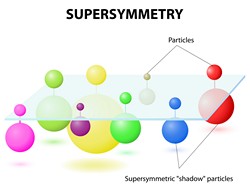Gauge theory versus string theory
Gauge/string duality, also called AdS/CFT correspondence, is a surprising conjecture in theoretical physics. Gauge theory describes the interaction of elementary particles, and string theory is a theory of quantum gravity. They can give the same prediction in special situations called the large Nc limit. Some theories possess a hidden infinite-dimensional symmetry called integrability. It is hoped that, by exploiting integrability, the validity of AdS/CFT correspondence can be tested at any values of a coupling constant. The goals of the TESTINGGSD (Testing gauge string duality) project were twofold: to invent new methods of integrability and to compute new physical observables to test the gauge/string duality. The team found boundary thermodynamic Bethe ansatz (BTBA) equations, which describe the dimension of double-determinant-like operators of N=4 supersymmetric Yang-Mills theory in four dimensions. The numerical solution of the BTBA equations exhibited unexpected behaviours, suggesting a singularity, interpreted as indicating the existence of open tachyons at strong coupling. By computing 1/Nc corrections to the dimensions of the operators called planar zero modes, it was found that they acquire non-positive anomalous dimensions. This means that a multi-particle state in gravity should form a bound state in the absence of repulsive charges. It was also found that these operators always have a definite number of traces, which can be explained by the large Nc order counting of higher-point correlation functions. Examples of the operators were discovered that are hard to predict by integrability methods. How general is gauge/gravity duality? The project results suggest that studying higher correlation functions in the large Nc limit can solve some of the finite Nc spectral problems. Continuing this line of research is expected to give a precise relationship between the two theories. In particular, the leading 1/Nc correction to the anomalous dimensions of planar zero modes can be thought of as a new interpolating function of AdS/CFT, interpolating between weak and strong coupling beyond the planar limit. Recently, higher correlation functions of AdS/CFT correspondence have received critical attention. Based on the success of integrability methods in the spectral problem, new integrability methods may obtain three-point functions in the large Nc limit. The four-point functions have also been studied. Combining all these developments will allow the precise determination of the generality of the gauge/string duality.




